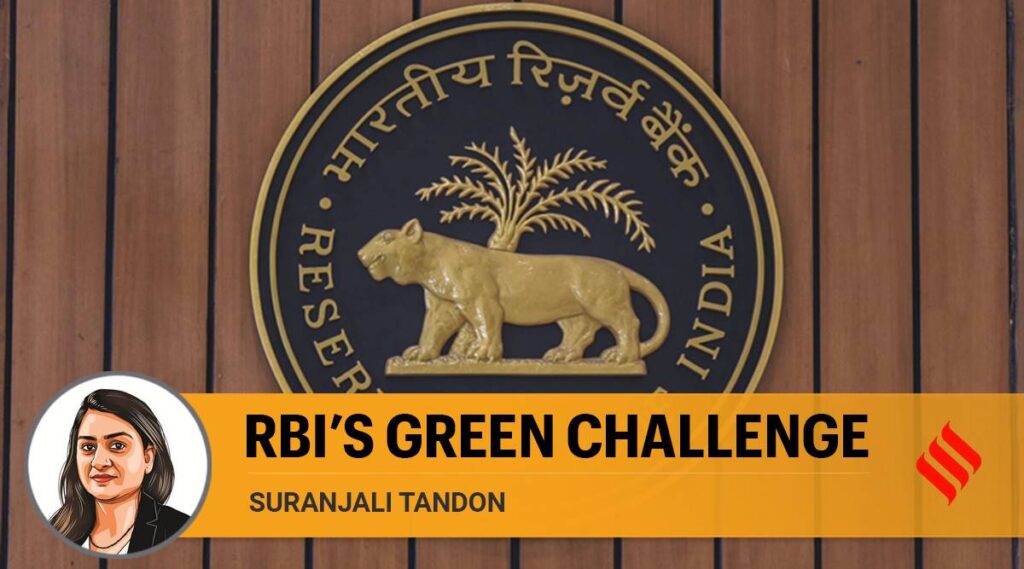
As the world copes with the repercussions of legacy emissions, there is growing pressure to achieve climate-compatible growth. Fiscal and monetary authorities will now have to be cognisant of the feedback from climate change to the economy and suitably adapt their policy responses. Exposure of assets to extreme weather events and loss of asset value due to a green transition are imminent risks to the financial system.
Yet, the inclusion of climate change in a central bank’s policy response function is a widely contested issue. Some experts see no harm in the bank’s internal assessment of the impact climate change would have on the economy but shy away from asking the bank to actively set a monetary policy based on such assessments. Others argue that climate change is a significant threat to financial stability and a central bank that does not address climate risk is “failing to do its job”.
Central banks can guide the flow of finance by restricting the flow of credit to fossil fuel-dependent sectors. Central Banks adopt a range of best practices and approaches. For example, the Bank of Lebanon sets different reserve requirements for loans linked to energy savings. The People’s Bank of China offers positive incentives to commercial banks for extending green credit and India includes renewable energy (RE) within priority sector lending.
The RBI has been measured yet receptive in addressing the concern. In 2021, it joined the Network for Greening Financial System, a voluntary group of 116 central banks that promotes the exchange of best practices on green finance. In July 2022, it released a discussion paper that covers the issue of climate risks and sustainable finance. The paper seeks to understand preferred approaches to identification and disclosure of exposures to climate-related risks, frameworks for management of risks and capacity building within the banking sector.
Heeding the shift, RBI’s paper indicates interest in understanding the degree of physical and transition risks. While at the same time it reflects that RBI prefers to tread carefully by assessing the preparedness of the system rather than indicate its own approach to what a central bank can do. The RBI’s approach is reasoned since acknowledgement of risks is a double-edged sword. Not recognising the risks hints at complacency whereas preempting all such risks through regulation means that the already stressed loan books will be aggravated. The paper, therefore, allows the RBI to respond based on existing practices and a better understanding of the risk profiles of banks.
RBI’s past research papers also indicate a growing acknowledgement of risks to the financial system. In 2021, an RBI research paper demonstrated that extreme weather events can elevate inflation — as was demonstrated by wheat prices this year. In 2022, RBI estimated the exposure of Indian banks to green transition. The report found that direct exposure of public and private banks to three fossil fuel-based sectors — electricity, chemicals, and automobiles — may not be “not alarming”. Nevertheless, indirect exposure through other sectors within the fossil fuel value chain must also be closely monitored, given that some already have bad loans.
Both reports indicate that there is a need for further comprehensive risk assessment to be carried out. To add to this, the risk to public borrowing from declining fossil fuel revenue also needs to be established. While the wheels are turning within RBI, disclosures and risk assessment frameworks are a starting point. It remains to be seen what macro and micro-prudential regulations RBI will introduce. Moreover, the scope of discussion in the paper remains limited and without a general narrative on the central bank’s role. It does not detail the various instruments such as capital requirements for fossil fuel-based lending by banks or credit guidance a central bank can work with to ensure the greening of the financial system.
The RBI’s consultation paper shows the bank’s inclination to address risks from climate change. It indicates that regulatory changes are in the offing yet their direction remains unknown. Moreover, it leaves to the imagination if climate change will be a key consideration for monetary policy. A point that needs due consideration is that a full assessment of macro-risks from disinvestment from fossil fuel-based assets requires a clear identification of the horizon for phasing down fossil fuels across sectors. While these are not in the remit of the RBI, it is a precondition for comparability of risk assessment carried out by financial institutions thus forming the basis for regulation. The release of the paper is therefore only the beginning and requires an overall net zero plan for the disclosures to be used objectively.
Courtesy- https://indianexpress.com/article/opinion/columns/inclusion-of-climate-change-in-policy-is-crucial-for-a-strong-economy-8114127/


